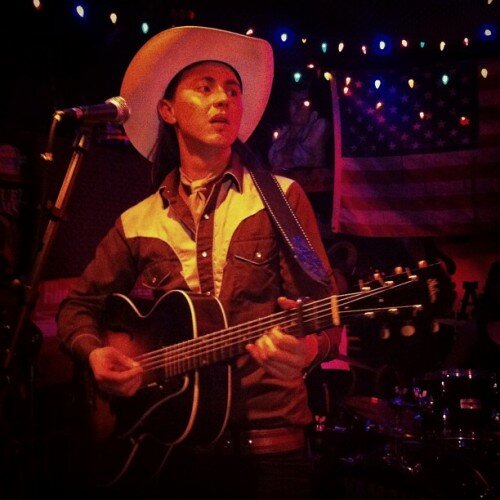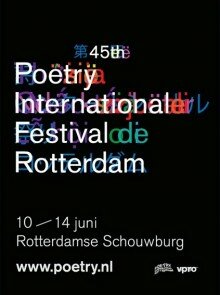Spy, Interpreter, Double Agent
June 1, 2005
Ranjit Hoskote talks to Arundhathi Subramaniam about veils – brocade and diaphanous – and how to create a music of surprises.
AS: The primacy of image has been consistent in your work, but your recent work does seem to be more permeable, more reader-friendly. Would you agree? How do you look at the directions your work has taken since your first book, Zones of Assault, in 1991?
RH: The work that went into Zones was shaped by my interest in the poem as artefact. Looking back, I think there was a danger of the poetry becoming somewhat hermetic and self-referential. There was a potential loss of the social dimension of poetry. Every voice has a sociality, and by default, many of the Zones poems became poems of solitude. I wasn’t accommodating them to a shared understanding with readers. They involved decoding. But can you decode a work when you have absolutely no idea how to approach and situate it?
The notion of the archetype interested me a great deal at this time, in the late 1980s and early 1990s. The thinkers who were very significant to me at the time were Marx, Jung, Nietzsche and Wittgenstein. Zones reflected, to different degrees, the various stresses of these four thinkers. Wittgenstein has continued to remain important for me, as a model, particularly for his philosophical journey from viewing language as a tool to his insight that language is a form of life. I respect and admire his ability to correct his course in moving on, rather than remaining committed to a failed and unproductive position.
Then followed nine years of doing other things, for me. I practised other textual forms, which was good for me. I worked on translations of Bhartrihari from the Sanskrit, Lal Ded (the medieval Kashmiri woman mystic), Dahake (the contemporary Marathi poet). Ialso worked on a critical biography of Jehangir Sabavala, the artist. And I was reading a great deal of Kabir and American poetry, especially Adrienne Rich, Jori Graham, James Merrill. Then in 1995, I went to the International Writing Program in Iowa, and met many of the poets I’d read – from Mark Strand to Louise Gluck.
In the process, I was able to gradually articulate some of my misgivings about Zones. I began to grow more interested in ways of expressing the speaking voice. I began to see the importance of setting the self in a historical framework, without letting it turn autobiographical in a maudlin or confessional manner. And I grew increasingly fascinated by the game of trying out various identities: I’ve always been attracted to the persona of the spy, the interpreter, the double agent. Perhaps it has something to do withbeing a poet among critics, a critic among poets, a theorist among curators.
AS: It was quite a hiatus between Zones and Cartographer’s Apprentice, wasn’t it? Ten years.
Well, I worked on the staff of the Times of India from ’93 to ’99, having been their Art Critic since 1988. As I said, I was involved in many kinds of textual practice at this time. But for a while I did wonder whether the poetic impulse had left me altogether – the social climate of the media was jejune and I had to fight to retain a liberated zone for myself. Then in 1994, I went to Dehu, on the trail of Tukaram, the saint-poet with whom this village is closely associated. That was explosive. And then Iowa happened: much of The Cartographer’s Apprentice and The Sleepwalker’s Archive emerged from that period. I think the differences between Zones and Cartographer’s Apprentice are immediately apparent. Cartographer doesn’t imperiously pretend there is no listener or reader. The speaking voice grows stronger. The formal problem with Zones is: Who’s speaking? I think Cartographer addresses that problem. There is also some narrative provocation. The situations are less abstract. The poetry is more invitational, but at the same time it doesn’t let up on the image. The Zones-style use of language as a weapon is now replaced by the quieter realisation that dreams that you have had in isolation can be made explicable to others.
AS: There’s a gap of just a year between Cartographer and your next book. Was The Sleepwalker’s Archive an extension of The Cartographer’s Apprentice?
RH: Actually, Cartographer is, with the exception of the long poems in it, an extract from The Sleepwalker’s Archive. I went through some amount of anxiety in the late ’90s because it had been a long time since my previous book had been published. So when the proposal of a book of poems with drawings by artist Laxman Shreshtha came up, it seemed ideal. And so Cartographer emerged. This was also an occasion to test-run my longer poems, which had until then had neither a reading nor a publishing context.
The idea of the archive has always been strong in my work, and that became intensified in The Sleepwalker’s Archive. I found myself confronted by the fear of the loss of memory, the loss of language. This fear was shaped by factors as diverse as friend and poet Nissim Ezekiel’s struggle with Alzheimer’s close at hand, as well as the destruction of the Bamiyan Buddhas in a more global context. There was also a sense of loss at the community of poets dispersing, after the strong feeling of connection that some of us had shared at the Poetry Circle in Bombay in the early ’90s. I think Sleepwalker also reveals an ability to move more comfortably through works of visual art.
AS: There also seems to be a greater spareness in the work.
I’m not overly interested in sound games any more. That was an important part of Zones, and it was part of my strategy of estranging language. Now the double agent strategy appeals to me a lot more: I prefer, now, to come into the state of language as it is and then to pull off a music of surprises. This new poetry is about a constant play of resources – of language, cadence, sound and association. It’s about working through the polarities of baroque and spare, of shaping a poetry that is not too skeletal or too flabby. It’s about being constantly aware of the opposite of what I’m doing, and never losing sight of that. It’s like building a house: you get an insider’s view and then come out and see it, and that helps you plot tricks of perspective. It is similar to the challenges I work with as a curator of contemporary art, offered the spatial problems of display and arrangement: in both situations, I’m constantly thinking about what sight lines I’m offering my viewers, the pattern of clues I’m giving them.
AS: Is it my imagination or does your work evoke more indoor spaces now than before?
RH: I think I was very starry-eyed about the spectacle of history in the past. Now there’s a greater concern with the intimate in the framework of history – the world inside the room, as it were, which is, for instance, evoked in such a masterly fashion by Vermeer. The spatial relationship between the interior and the landscape fascinates me more and more.
AS: You were just 22 when Zones of Assault was published. Interestingly, you never seemed to have an oppositional relationship with a senior generation of writers. Was it something of a burden – being absurdly young and absurdly bright for your age?
RH: Thanks to that peculiar situation, I’ve never really felt like part of the younger generation – in poetry, in the art world, or even in cultural studies. In poetry, I was able to transit with ease between the seeming ‘camps’ associated, in the late 1980s, with senior poets like Nissim (Ezekiel), Dom (Moraes) and Adil (Jussawalla). I suppose I did feel I shared a lot of references with them; there were instinctive connections to a lost world. And the notion of being an apprentice to a tradition has always been strong in my case.
This view of art as something that involves riyaz or sadhana may have something to do with the fact that I belong to the Saraswat Brahmin community, one that has always been very committed to music, both through patronage and practice. Music was an important part of my childhood. I grew up with the folklore of Hindustani classical music, with stories about great musicians like Ravi Shankar, Bhimsen Joshi, Mallikarjun Mansur and Gangubai Hangal, the years of apprenticeship that their art required. So I don’t think I ever suffered from delusions of genius.
AS: Do you see yourself moving into other literary forms in the future?
RH: Well, a long fiction text is not completely impossible. A novel set in late Mughal times is an idea that’s been with me for a long while.
AS: So there is a lurking impulse to tell a story?
RH: To tell it and veil it. I like veils – brocade veils, diaphanous veils. To tell a story is to arrange a set of curtains. Yes, I think I’d enjoy that.
April 2005









